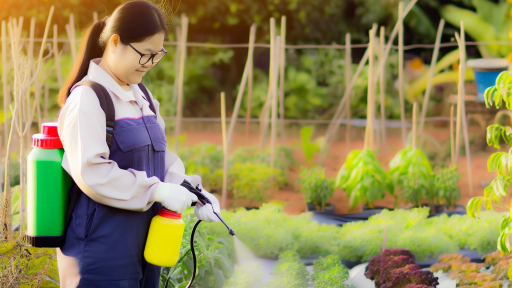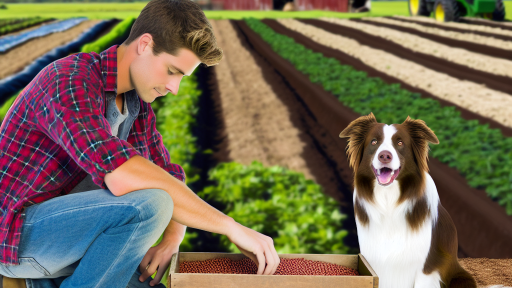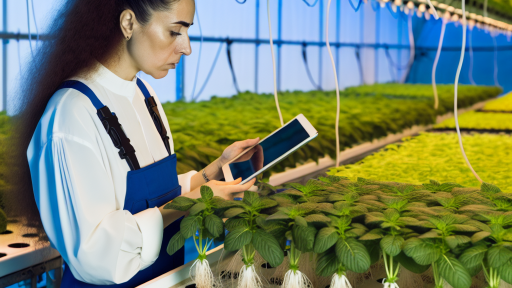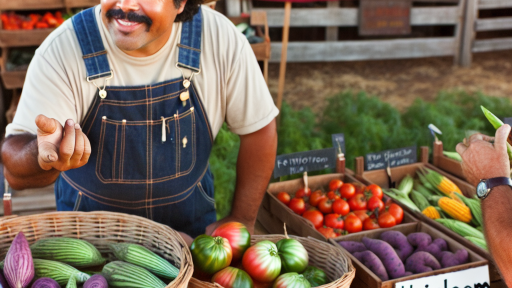Understanding the Basics of Container Gardening
What is Container Gardening?
Container gardening involves growing plants in a variety of containers.
This approach is ideal for those with limited space.
It allows individuals to cultivate vegetables, herbs, and flowers.
Furthermore, it enhances mobility since containers can be moved easily.
Choosing the Right Containers
Selecting appropriate containers is crucial for success.
Consider the material; options include clay, plastic, and metal.
Ensure the container has drainage holes to prevent waterlogging.
Drainage is key to maintaining healthy root systems.
Moreover, the size of the container impacts plant growth.
Smaller containers generally suit compact plants.
In contrast, larger containers accommodate more expansive root systems.
Optimizing Soil Quality
The right soil is vital for container gardening.
Utilize high-quality potting mix for optimal drainage and nutrition.
Avoid using garden soil, as it may compact and hinder drainage.
Additionally, consider adding organic matter for improved soil health.
Transform Your Agribusiness
Unlock your farm's potential with expert advice tailored to your needs. Get actionable steps that drive real results.
Get StartedOrganic matter enriches the soil and supports beneficial microorganisms.
Watering Techniques
Effective watering is essential for container gardens.
Check the soil moisture regularly to prevent overwatering.
Water deeply, but less frequently, to encourage root growth.
Consider using self-watering containers for convenience.
Self-watering options help regulate moisture levels consistently.
Sunlight Requirements
Most container plants thrive under sufficient sunlight.
Identify the sunlight needs of your specific plants.
Some plants prefer full sun, while others thrive in partial shade.
Rotate containers occasionally to ensure even sun exposure.
Pest Management
Pest control is vital for sustaining healthy plants.
Inspect plants regularly to catch issues early.
Use organic insecticides as a natural pest control method.
Additionally, incorporate companion planting to deter pests naturally.
Seasonal Considerations
Understand seasonal impacts on container gardening.
Some plants are better suited for specific seasons.
Rotate seasonal crops to maximize productivity throughout the year.
Additionally, consider using frost cloths for late-season protection.
Identifying and Addressing Soil Challenges in Containers
Common Soil Issues in Container Gardening
Container gardening presents unique soil challenges for plant health.
Poor drainage often leads to waterlogged roots.
Additionally, soil compaction can hinder root expansion.
Nutrient deficiencies can result from limited soil volume.
Lastly, soil acidity or alkalinity can affect plant growth.
Choosing the Right Soil Mix
Selecting an appropriate soil mix is essential for success.
Showcase Your Farming Business
Publish your professional farming services profile on our blog for a one-time fee of $200 and reach a dedicated audience of farmers and agribusiness owners.
Publish Your ProfileUse lightweight potting soil specifically designed for containers.
A blend of peat moss, perlite, and vermiculite promotes drainage.
Furthermore, consider adding organic compost for nutrients.
It’s important to avoid garden soil, as it compacts easily.
Improving Drainage in Containers
Improving drainage prevents excessive moisture retention.
First, ensure pots have drainage holes at the bottom.
Add a layer of gravel or stones at the base of containers.
Additionally, elevate pots using pot feet or saucers to encourage airflow.
Managing Nutrient Levels
Nutrient management keeps plants healthy and thriving.
Regularly test the soil to monitor nutrient levels.
Apply slow-release fertilizers to provide a balanced nutrient supply.
Additionally, compost tea can be an excellent organic nutrient boost.
Adjusting Soil pH
Soil pH influences nutrient availability for plants.
Test the pH using a home testing kit or meter.
For acidic soils, adding lime can raise the pH level.
Conversely, incorporating sulfur can lower the pH if necessary.
Always adjust gradually and retest frequently for best results.
Managing Watering Needs: Avoiding Overwatering and Underwatering
Understanding Watering Basics
Watering is crucial for plant health in container gardening.
It ensures that plants receive the moisture they need to thrive.
However, many gardeners struggle with the right balance.
Avoiding Overwatering
Overwatering can lead to root rot and other plant diseases.
To prevent this, check the drainage of your containers.
Good drainage ensures excess water flows out properly.
Also, use pots with drainage holes to facilitate this process.
Monitor your soil moisture regularly by using your finger.
If the top inch of soil feels wet, postpone watering.
Strategies to Prevent Overwatering
- Choose appropriate container sizes for your plants.
- Incorporate well-draining soil mixes.
- Water during cooler parts of the day.
Avoiding Underwatering
Underwatering can stunt growth and lead to plant stress.
It’s essential to establish a proper watering schedule.
Pay attention to weather conditions that may necessitate more water.
Hot, dry weather can dry out soil quickly.
Consider using self-watering containers to ease this burden.
Strategies to Prevent Underwatering
- Set a consistent watering routine for your plants.
- Observe your plants for signs of drought stress.
- Use moisture meters for accurate readings.
Recognizing Plant Needs
Every plant type has unique watering requirements.
Consider the species you are growing in your containers.
Research their specific needs before planting.
Some plants prefer more moisture than others.
Adjusting Strategies Seasonally
Watering needs change with the seasons.
In spring and summer, plants typically need more water.
During fall and winter, you may reduce watering frequency.
Always tailor your approach based on current conditions.
Find Out More: Sustainable Urban Farming Methods Explained
Showcase Your Farming Business
Publish your professional farming services profile on our blog for a one-time fee of $200 and reach a dedicated audience of farmers and agribusiness owners.
Publish Your ProfileDealing with Limited Space: Vertical Gardening Solutions
Understanding Vertical Gardening
Vertical gardening allows you to maximize limited space efficiently.
This technique involves growing plants upward instead of outward.
It enables you to cultivate more plants in a smaller area.
Moreover, vertical gardening enhances aesthetics in small spaces.
Choosing the Right Structure
Consider various structures for vertical gardening.
Popular options include trellises, wall planters, and shelves.
Fences can also serve as effective support for climbing plants.
Additionally, pegboards are versatile for smaller herbs and flowers.
Selecting Suitable Plants
Choose plants that thrive in vertical setups.
Vining plants like tomatoes and cucumbers are excellent choices.
Herbs such as basil and mint also adapt well to vertical gardening.
Consider flowering plants like peas for added beauty and function.
Essential Care Techniques
Care for your vertical garden just like any other garden.
Ensure proper watering techniques to reach all plants.
Implement a routine for regular fertilization and pruning.
Watch for pests and diseases to maintain plant health effectively.
Incorporating Vertical Gardening into Your Space
Integrate vertical gardens into balconies, patios, or walls.
Create a focal point using a unique structure or arrangement.
Combine aesthetics with functionality by choosing colorful plants.
Use recycled materials for an eco-friendly approach to vertical gardening.
Explore Further: Hydroponic Systems For City Gardeners
Choosing the Right Plants for Container Gardening Success
Understanding Your Climate Zone
Start by determining your local climate zone.
This will help you choose plants that thrive in your area.
Check the USDA Plant Hardiness Zone Map for guidance.
Selecting the Right Plants
Choose plants that suit your container size and type.
Consider both the height and spread of the plants.
Explore various categories of plants, including:
- Flowers for color and fragrance
- Herbs for versatility and flavor
- Vegetables for fresh produce
Companion Planting
Utilize companion planting techniques for success.
This method allows you to grow mutually beneficial plants.
For instance, combine tomatoes with basil for better growth.
Additionally, consider pest-repelling plants like marigolds.
Assessing Sunlight Requirements
Different plants require varying amounts of sunlight.
Identify the sunlight exposure in your gardening space.
Choose full-sun plants for areas that receive six hours or more of direct sunlight.
Opt for shade-tolerant plants if your space gets limited light.
Watering Needs
Understand each plant’s watering needs before planting.
Some plants thrive in moist conditions, while others prefer dry soil.
Use self-watering containers to simplify the process.
Regularly check soil moisture to avoid over or underwatering.
Experimenting with Plant Combinations
Don’t hesitate to experiment with different plant combinations.
Showcase Your Farming Business
Publish your professional farming services profile on our blog for a one-time fee of $200 and reach a dedicated audience of farmers and agribusiness owners.
Publish Your ProfileThis can create visually appealing and diverse arrangements.
Try mixing foliage textures and colors for added interest.
Monitor how well the combinations perform throughout the growing season.
Find Out More: Container Gardening Tips For Urban Farmers
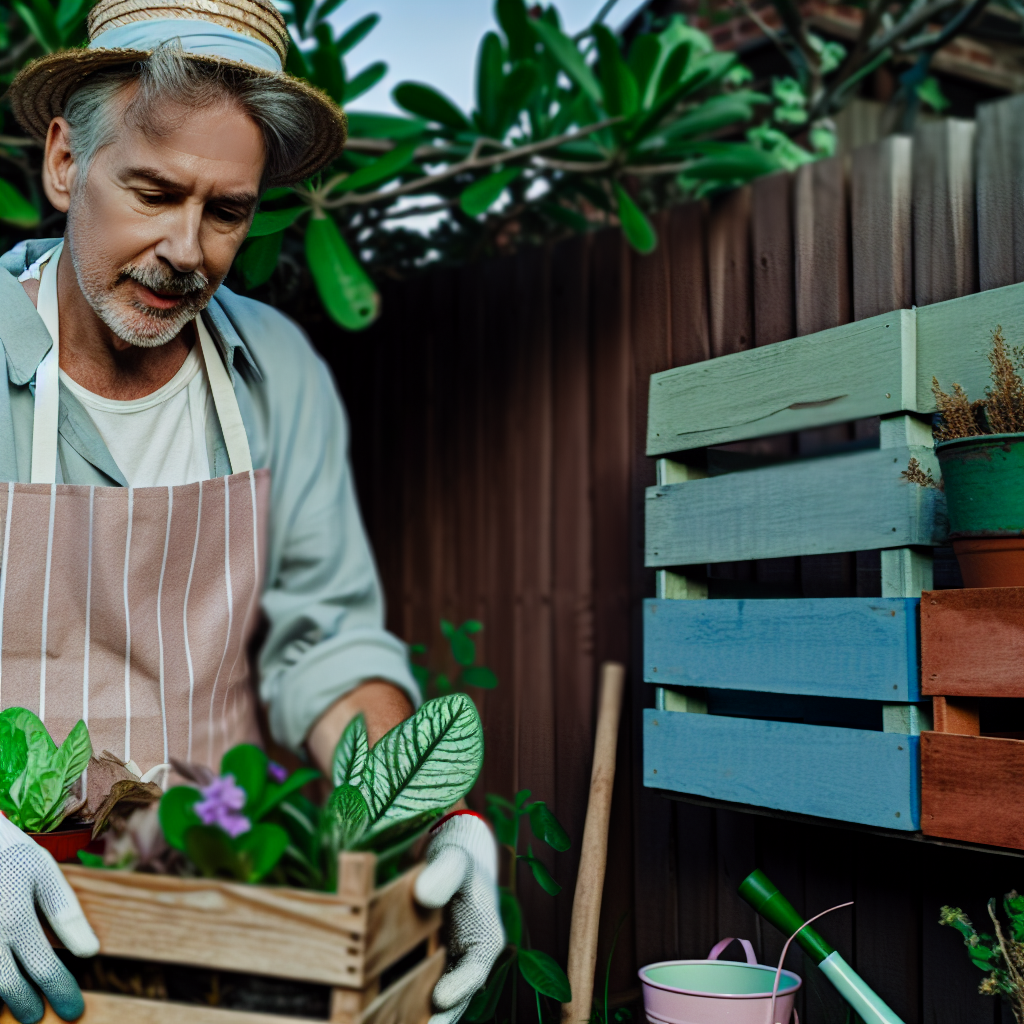
Pest Control Strategies for Container Gardens
Identifying Common Pests
Container gardens can attract various pests.
Knowing which pests to look for is essential.
Common pests include aphids, spider mites, and whiteflies.
Carefully examine your plants for signs of infestation.
Prevention Techniques
Prevention is often the best pest control strategy.
Select disease-resistant plant varieties to minimize issues.
Additionally, maintain good air circulation around your plants.
Use proper watering techniques to avoid overwatering.
Finally, regularly clean your containers to remove debris.
Natural Pest Control Methods
Consider using natural alternatives to chemical pesticides.
Introduce beneficial insects to your garden.
Ladybugs and lacewings can help control aphid populations.
Neem oil is another effective natural pesticide.
Apply it in the early morning or late evening for best results.
Homemade Remedies
Many homemade remedies can deter pests effectively.
Combine water with dish soap to create a simple insecticidal spray.
Alternatively, try garlic spray to repel unwanted pests.
Mix minced garlic with water and let it steep overnight.
Filter and spray the mixture on affected plants.
Monitoring and Maintenance
Regular monitoring helps catch pest problems early.
Inspect your plants weekly for any signs of pests.
Take prompt action if you notice any issues.
Consistent care leads to a healthier garden and fewer pest problems.
Additionally, keep records of pest activity to improve your strategies.
Delve into the Subject: Choosing The Right Containers For Farming Plants
Nutrient Management: Fertilizing Container Plants Effectively
The Importance of Nutrient Balance
Nutrient balance is crucial for the health of container plants.
Adequate nutrients lead to robust growth and vibrant blooms.
Conversely, nutrient deficiencies can stunt growth and alter plant color.
Monitoring nutrient levels helps maintain this balance.
Types of Fertilizers
Various fertilizers are available for container gardening.
- Granular fertilizers release nutrients slowly.
- Liquid fertilizers provide quick nutrient access.
- Slow-release fertilizers offer extended nutrient supply.
Choosing the right type depends on plant needs and season.
Application Techniques
Applying fertilizers correctly ensures maximum effectiveness.
For granular fertilizers, sprinkle them around the base.
Water thoroughly afterward to dissolve the granules.
For liquid fertilizers, dilute as per the instructions.
Apply them during watering to promote absorption.
Showcase Your Farming Business
Publish your professional farming services profile on our blog for a one-time fee of $200 and reach a dedicated audience of farmers and agribusiness owners.
Publish Your ProfileTiming Your Applications
When you fertilize is as important as how you fertilize.
Most container plants benefit from regular feeding during the growing season.
Typically, this period ranges from spring to early fall.
Reduce or pause fertilization during winter dormancy.
Signs of Over-Fertilization
While fertilizing, watch for signs of over-fertilization.
Leaf burn and yellowing foliage indicate nutrient overload.
Drop in blooms may also suggest excess fertilizers.
In such cases, flush the soil with water to reduce nutrient concentration.
Organic Options for Fertilizing
Organic fertilizers are gentle yet effective alternatives.
Compost and worm castings enrich the soil naturally.
Fish emulsion and seaweed extract provide essential nutrients.
Using organic options enhances microbial life in the soil.
Considerations for Specific Plants
Differentiating plants have distinct nutrient requirements.
Flowering plants often need higher phosphorus levels for blooms.
Leafy green plants thrive on nitrogen-rich fertilizers.
Research your specific plants to provide tailored care.
Seasonal Considerations
Spring Planting
Spring is an exciting time for container gardening.
You can start planting cool-season crops like lettuce and peas.
Additionally, consider flowers like pansies for vibrant colors.
Ensure you monitor soil temperatures for ideal planting conditions.
Summer Care
Summer brings warmth, requiring regular watering for container plants.
Plants like tomatoes and peppers thrive in the heat.
Use mulch to help retain moisture and reduce evaporation.
Be mindful of pests, which can become more active during this season.
Autumn Adjustments
As temperatures drop, prepare for the transition in your garden.
Cut back any dead or dying plants to promote health.
Switch to cold-tolerant plants like kale and winter pansies.
Consider bringing some plants indoors to protect them from frost.
Winter Strategies
Winter can be challenging for container gardening.
Consider insulating pots with bubble wrap to retain warmth.
Some plants can endure the cold, like certain herbs and evergreens.
Regularly check for frozen soil and adjust watering accordingly.
Additional Resources
Common Problems Growing Spinach (and how to prevent them …
What Is Commercial Agriculture? | Pure Greens Container Farms

